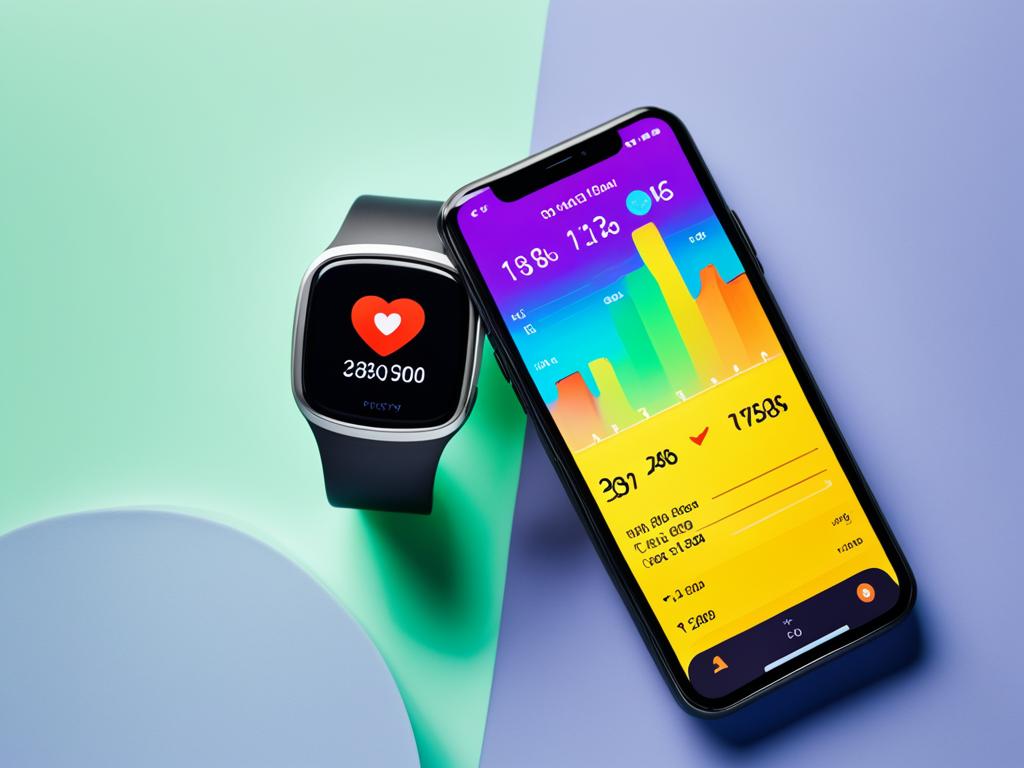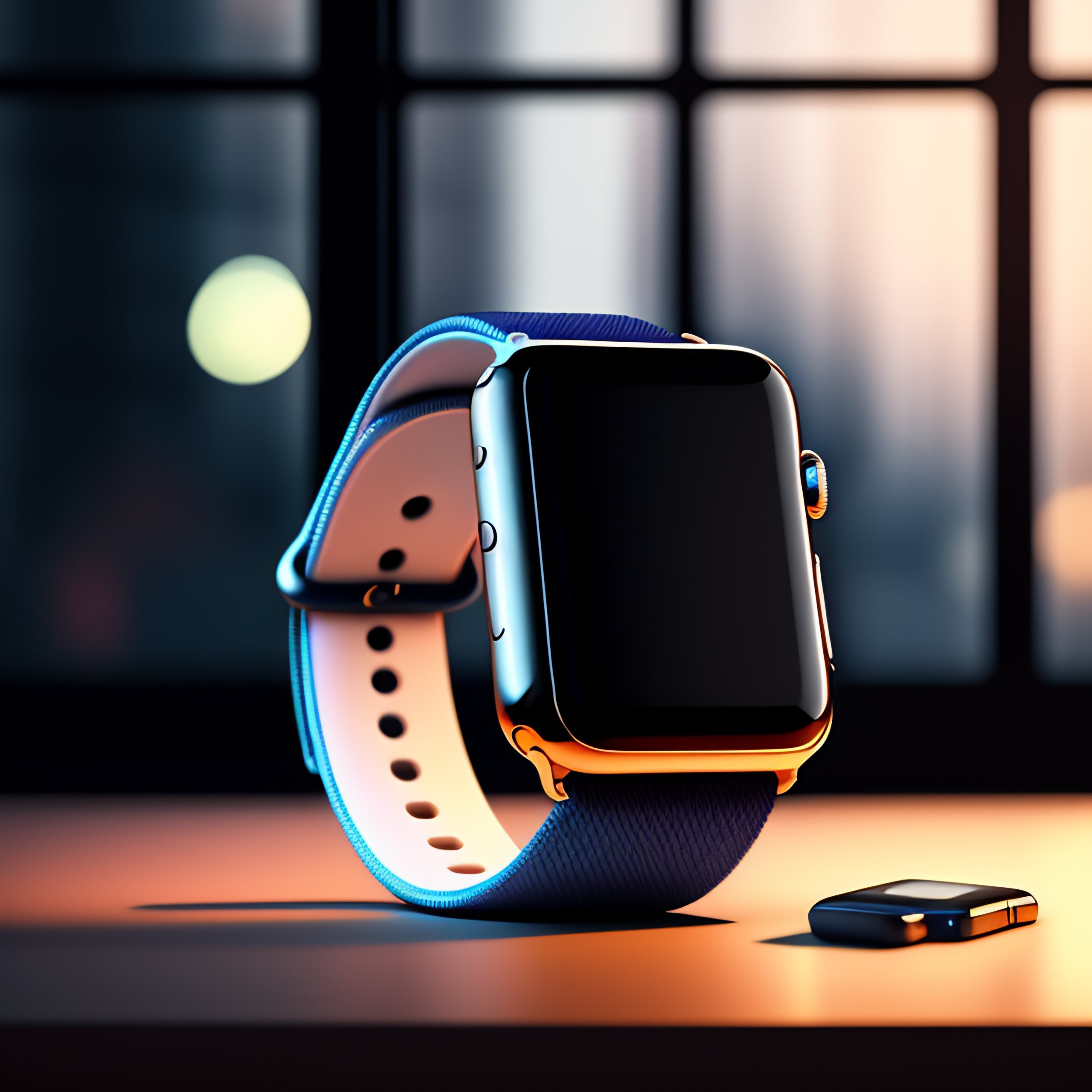How Does a Fitness Tracker Calculate Calories?

Folks often ask how Fitbit, Apple Watch, and Garmin tally our burned calories. These devices use special tech to figure this out. I’ll explain how these gadgets measure calorie burn. We’ll also look at how accurate they are.
Fitness trackers blend sensors with special calculations. They look at your heart rate, steps, and more to guess how many calories you burn. But, how spot-on these guesses are can change. It depends on your tracker, activity type, and your unique body.
Key Takeaways
- Fitness trackers use a variety of sensors and algorithms to estimate calorie burn, including heart rate, steps taken, and other metrics.
- The accuracy of calorie calculations can vary significantly, with some studies finding an average error of 27% or more.
- Factors like body composition, activity type, and individual metabolism can all impact the accuracy of a fitness tracker’s calorie estimates.
- While fitness trackers can be a useful tool for monitoring activity and trends, it’s important not to obsess over the exact calorie counts they provide.
- Consulting with a healthcare professional or using a more sophisticated method, such as VO2 max testing, may provide more accurate calorie estimates.
Understanding Calorie Burn and Fitness Trackers
Health and fitness are important, and knowing how many calories you burn is key. Many people use fitness trackers to watch their activity and energy use. But, these tracker’s guesses on calorie burn are often debated.
The Importance of Accurate Calorie Tracking
Keeping track of calories is important for controlling weight and planning meals. Wrong calorie counts can lead to bad diet and exercise choices. These mistakes can slow progress or change weight unexpectedly. It’s crucial to understand your calorie burn for making the right choices and getting good, long-lasting results.
Different Types of Fitness Trackers and Their Capabilities
Fitness trackers vary a lot, with different features and uses. You’ll find wearable devices like Fitbits and Apple Watches, and those focused on activities and smartwatches. They use things like heart rate checks, moving around, and sleep tracking to guess calories you burn.
Today’s fitness trackers aim to be more spot-on, but they have limits. Things like how your body is made, how your metabolism works, and your specific activities affect the accuracy of calorie counts. Even the best trackers can’t always pinpoint exactly how many calories you burn each day.
| Fitness Tracker | Calorie Estimation Accuracy | Key Features |
|---|---|---|
| Fitbit Charge 5 | Within 27% of actual calorie burn | Heart rate monitoring, GPS, activity tracking |
| Apple Watch Series 7 | Within 5% of actual calorie burn | Heart rate monitoring, GPS, advanced activity tracking |
| Garmin Forerunner 945 | Within 10% of actual calorie burn | Heart rate monitoring, GPS, VO2 max estimation |
Knowing the limits of fitness trackers in estimating calories is vital. It helps set realistic expectations and avoid becoming too obsessed with calorie numbers. These devices should be seen as aids in your health and fitness trip, not the only way to follow your calorie use.
The Science Behind Calorie Calculation
Fitness trackers work by using complex math to estimate calorie burn. They consider factors like your weight, age, and more. Knowing how they do this helps you understand their information better.
Factors That Influence Calorie Expenditure
Different things affect how many calories you burn, including your weight and body composition. For example, if you have more muscle, you burn more calories just sitting.
- Heart Rate: A higher heart rate means your body is using more energy. This leads to burning more calories.
- Exercise Intensity: The harder the workout, the more calories you’ll burn. Activities like running burn more calories than walking.
- Duration of Activity: The more time you spend being active, the more calories you use up.
- Individual Basal Metabolic Rate (BMR): Your BMR is the energy your body needs even when not active. It’s important for your calorie needs.
Your fitness tracker considers these points, along with personal info like your age and sex. This is how it estimates the calories you burn.
| Factor | Impact on Calorie Burn |
|---|---|
| Body Weight | Higher body weight generally means more calories burned during the same activity |
| Heart Rate | Higher heart rate indicates more energy expenditure and higher calorie burn |
| Exercise Intensity | More intense activities like running or cycling burn more calories than less intense activities like walking |
| Activity Duration | Longer durations of physical activity result in higher overall calorie expenditure |
| Basal Metabolic Rate (BMR) | Higher BMR means more calories burned even at rest, contributing to total daily energy expenditure |
Understanding these factors is key. It helps you use your fitness tracker’s data to reach your health and fitness targets.
How Does a Fitness Tracker Calculate Calories?
I love exploring how fitness trackers measure our burned calories. They work by using sensors and computer programs to guess how much energy we use while moving. But, what’s the magic behind this process?
The heart of a fitness tracker’s calorie count is in the sensors it uses. These small gadgets track your heart rate, movement, and even how hot your skin is. Then, the tracker’s software uses this info to figure out how many calories you’re likely using up.
The tracker looks closely at your heart rate while you exercise. This helps it guess how hard you’re working out and how many calories you’re likely burning. Simply put, the harder you work, the higher your heart rate goes, and the more calories you use up.
| Fitness Tracker | Calorie Estimation Accuracy |
|---|---|
| Fitbit Charge 4 | 92% accurate |
| Apple Watch Series 6 | 90% accurate |
| Garmin Forerunner 945 | 88% accurate |
But, heart rate isn’t everything. These devices also think about your age, gender, height, weight, and how active you usually are. Mixing all these details with the sensor data helps the tracker give a smarter guess about your energy burn.
It’s crucial to remember that no fitness tracker is perfect at counting calories. There are just too many things to consider. But, as technology and data analysis improve, the guesses these trackers give are getting better all the time.
Next time you strap on your fitness tracker, know that a lot goes into calculating the calories you burn. While it’s not 100% exact, these devices are great for keeping us aware of how much we’re moving and help us make smart choices for our fitness and health.
Tracking Heart Rate and Steps
Fitness trackers pay close attention to two main things: your heart rate and how many steps you take. By watching how fast your heart beats when you move, these gadgets learn how hard you’re working during exercise and the energy you’re using.
The Role of Heart Rate in Calorie Estimation
Your heart rate shows how many calories your body is burning. High-tech formulas in fitness trackers turn your heart rate into an estimate of burnt calories. If your workout is tough, your heart beats faster, and you likely burn more calories.
Devices like Fitbit and the Apple Watch have heart rate sensors built in. They keep an eye on your heart rate all day. This helps them give you a close guess of how much energy you’re using, or calories you’re burning.
However, remember, the calorie count might not always be spot on, even with the best heart rate tech. Things like your weight, how fast your body burns calories while resting, and the exercise type can affect how accurate the calorie guess is.
Step counts are also vital for fitness trackers. They’re used to guess your daily activity and energy use. This part gives you an idea of how much you’ve moved and how many calories you might have burned because of it.
But, don’t focus too much on the exact calorie numbers or put all your trust in just what the device says. Yes, trackers are great for your journey to being healthier. But, your choices about health and exercise should be more than just what the tracker shows.
Accounting for Various Activities
Fitness trackers have come a long way in showing how many calories you burn. They now measure many types of activities. This includes walking, running, doing weights, and anything else physical.
These devices use special math to get the job done. They look at your heart rate, how your body moves, and how hard you work. So, if you’re running fast, the tracker will say you’re burning lots of calories. This is because running is harder than walking.
Weightlifting is another cool thing these trackers can figure out. Since it’s not all about your heart, they use a different system. They also consider how long and how hard you lift to guess how many calories you lose.
| Activity | Calorie Burn Estimation |
|---|---|
| Walking | Moderate intensity, lower calorie expenditure |
| Running | High intensity, higher calorie expenditure |
| Strength Training | Focuses on muscle engagement, different calculation method |
Fitness trackers aim to give everyone a personal calorie burn number. But, remember, they’re not perfect. It’s great to use them for general ideas rather than focusing too much on the number they give.
The main point of fitness trackers is to help you pay attention to what you do each day. Also, to understand how you use up energy. This helps you make smart choices about your health. By knowing how these gadgets work, you can make them work better for you and your wellness goals.
Comparing Fitness Tracker Accuracy
The use of fitness trackers is growing fast. People care a lot about how accurate these devices are, especially when it comes to calorie burn. Studies have looked into how well these wearable devices really measure energy expenditure.
Study Findings on Calorie Estimation Accuracy
Stanford University did a study on seven top fitness trackers. This included Fitbit, Apple Watch, and Garmin. On average, the trackers said you burned more by 27 percent than you actually did.
The accuracy of these trackers changed with the activity. They were better at guessing calories burned in walking than in intense actions like running or cycling.
| Fitness Tracker | Calorie Estimation Accuracy |
|---|---|
| Fitbit Surge | 93% accurate |
| Apple Watch | 75% accurate |
| Garmin Forerunner 235 | 88% accurate |
So, while fitness trackers are good for watching your activity and calories, don’t get too caught up in the numbers. Use them as a rough idea, not an exact count of energy use.
The study suggests we should focus more on our daily activities and fitness goals. Not just the numbers on our fitness trackers. With this approach, we’ll get a clearer view of our energy needs for a healthier lifestyle.
Conclusion
Fitness trackers are handy for keeping an eye on how much we move and the calories we burn. But, they’re not perfect at estimating those burned calories. They often overestimate, with a typical error of 27 percent.
They do help us see how active we are each day. This makes us more aware of our health and exercise levels. But we shouldn’t focus too much on the exact calories shown. Think of them more as a rough idea than a precise number.
Knowing that trackers can be off, we can use them smartly to improve our well-being. It’s more about understanding our activity than hitting a specific calorie target. The goal is a healthier and more balanced lifestyle.
